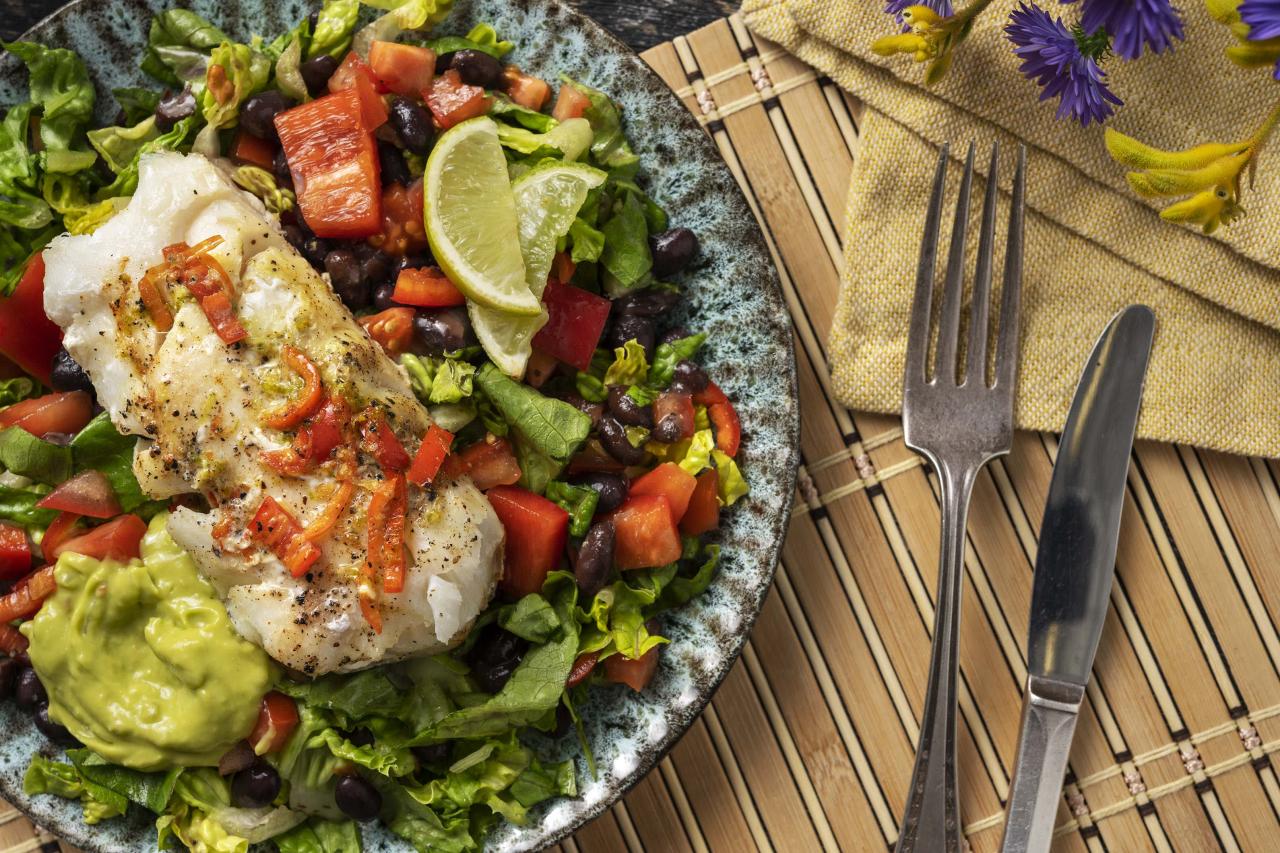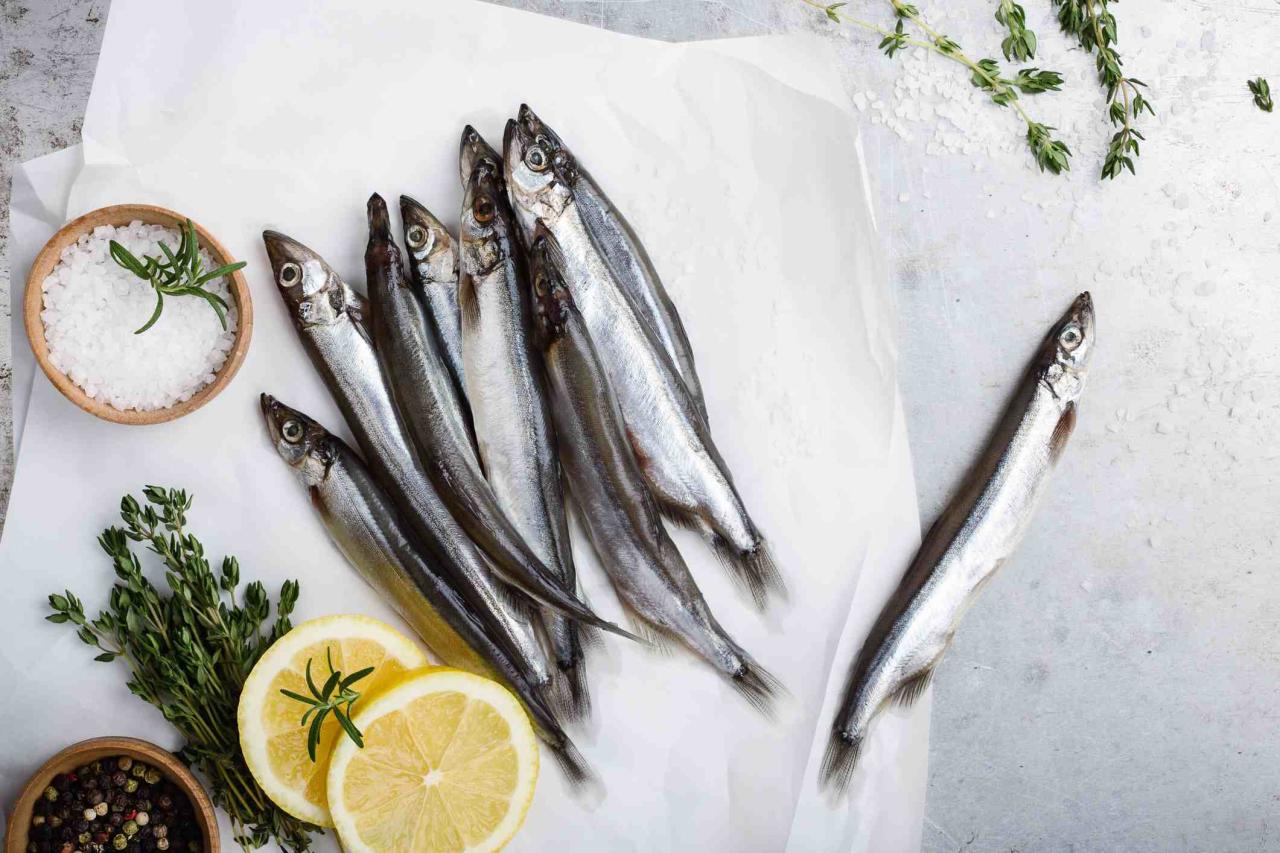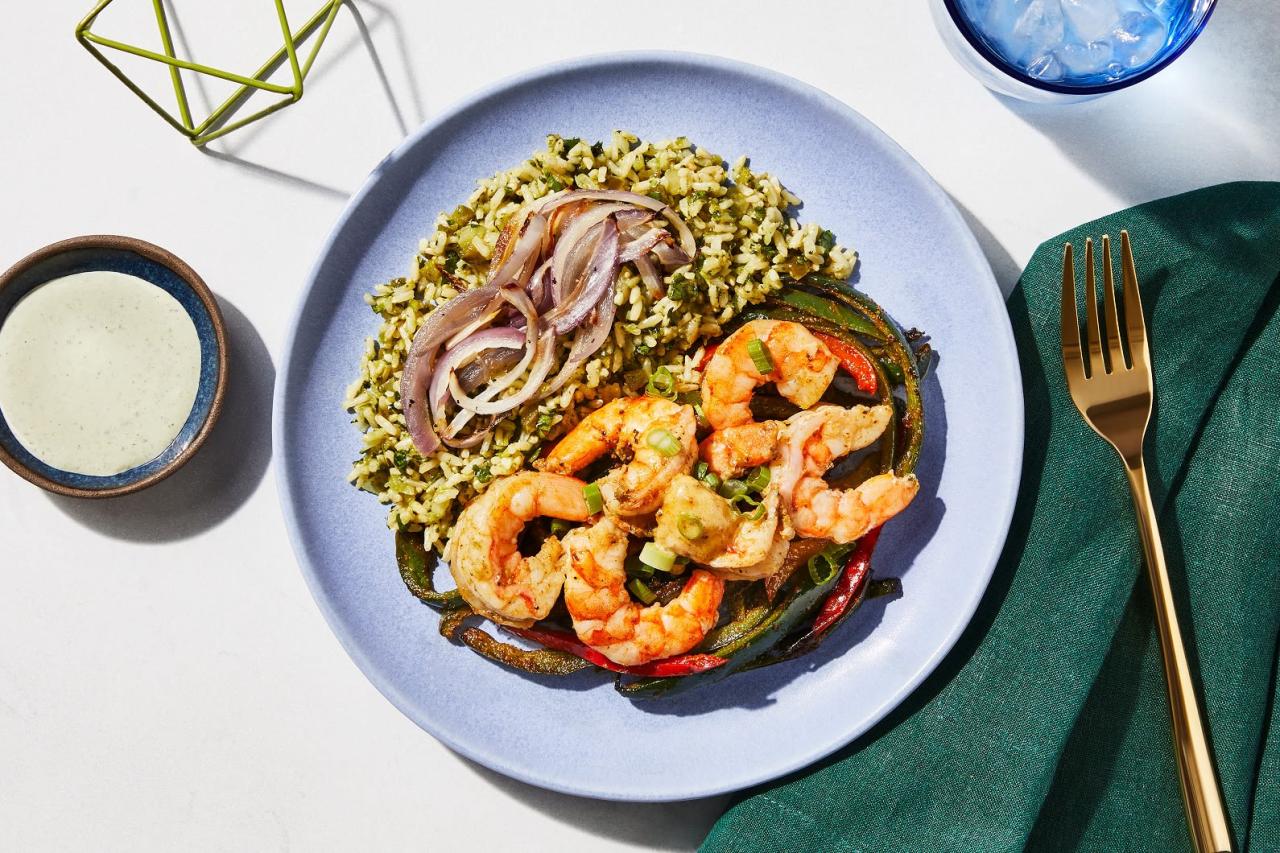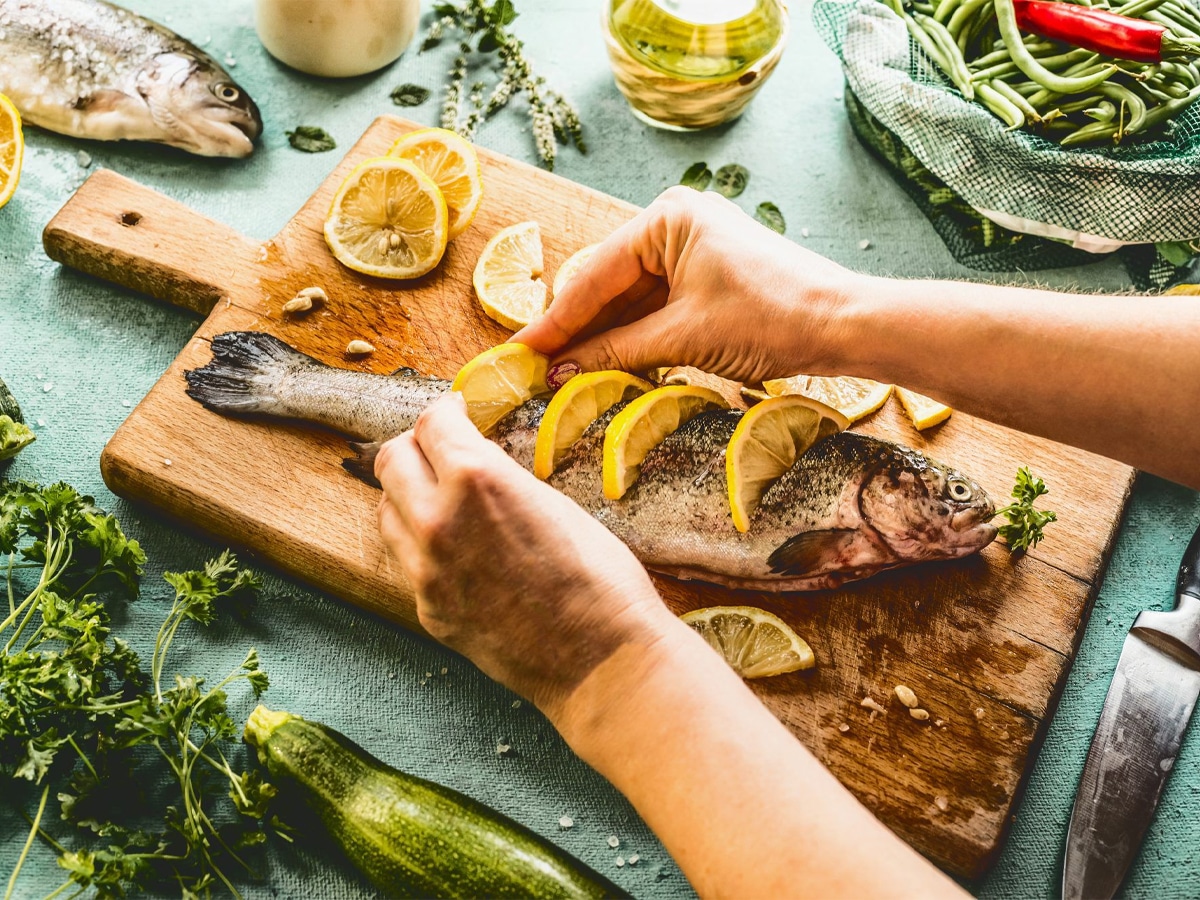Embarking on a pescatarian diet offers a sustainable and nutritious approach to eating that emphasizes the inclusion of fish and seafood while excluding other meats. This lifestyle choice has gained popularity due to its numerous health benefits and positive environmental impact. Understanding how to do a pescatarian diet involves careful planning, selecting the right ingredients, and embracing diverse culinary techniques to enjoy flavorful and balanced meals.
Throughout this guide, you will discover practical tips for meal planning, nutritional considerations, delicious recipes, and ways to incorporate sustainable seafood choices. Whether you are new to this lifestyle or seeking to refine your approach, this overview provides essential insights to help you adopt and maintain a healthy pescatarian diet effectively.
Introduction to the Pescatarian Diet

The pescatarian diet is a plant-based eating pattern that emphasizes the inclusion of fish and seafood while excluding other types of meat such as beef, pork, and poultry. This dietary approach offers a balanced way to enjoy a variety of nutritious foods with a focus on seafood as a primary protein source. The core principle revolves around combining vegetarian foods like vegetables, fruits, grains, legumes, nuts, and seeds with fish and seafood, creating a diverse and nutrient-rich diet that supports overall health.
Adopting a pescatarian lifestyle presents numerous health benefits, including improved cardiovascular health due to the high omega-3 fatty acid content in fish, better weight management, and enhanced brain function. Additionally, from an environmental perspective, choosing fish over land-based meats can significantly reduce the ecological footprint associated with meat production, such as greenhouse gas emissions and water usage. This dietary approach can also contribute to sustainable fishing practices when mindful choices are made regarding fish sources.
Historical and Cultural Contexts of Pescatarian Eating Habits
Throughout history, various cultures have practiced pescatarian eating habits, often influenced by geographic, religious, and economic factors. Coastal communities, such as those in Japan, Scandinavia, and the Mediterranean, have traditionally relied heavily on fish and seafood due to their proximity to water bodies rich in marine life. In ancient Japan, fish became a staple part of the diet, especially in Buddhist-influenced regions emphasizing vegetarian principles but incorporating fish for added protein.
Similarly, Mediterranean countries like Greece and Italy have long integrated seafood into their culinary traditions, emphasizing fresh, local catch.
Religious practices have also contributed to the prevalence of pescatarian diets; for example, certain Christian traditions observe fasting periods where abstaining from land meats is customary, but fish is permitted. Such cultural practices have helped shape the diet’s popularity and acceptance across different regions. Today, the pescatarian diet continues to evolve, often embraced for its health benefits and its alignment with sustainable eating practices rooted in diverse historical contexts.
Planning a Pescatarian Meal

Effective meal planning is essential for maintaining a balanced and nutritious pescatarian diet. It involves selecting a variety of seafood options, incorporating diverse dishes, and ensuring that meals meet your dietary needs and preferences. Proper planning helps in optimizing nutritional intake, managing grocery shopping efficiently, and avoiding repetitive menus, making your pescatarian lifestyle sustainable and enjoyable.
By thoughtfully designing weekly meal plans and organizing essential ingredients, individuals can enjoy a wide array of flavors and health benefits while minimizing meal preparation stress. This segment provides practical guidance on choosing seafood, structuring meal plans, and organizing pantry staples to support a thriving pescatarian diet.
Selecting a Variety of Fish and Seafood Options
Choosing a diverse range of fish and seafood not only enhances the flavor profile of meals but also ensures a broader spectrum of nutrients. Incorporating different types of seafood can provide a range of omega-3 fatty acids, vitamins, and minerals vital for overall health.
Focus on including fatty fish such as salmon, mackerel, and sardines, known for their high omega-3 content. Incorporate lean options like cod, haddock, and tilapia for versatile cooking. Shellfish such as shrimp, scallops, and mussels add texture and variety. Considering sustainable choices and seasonal availability supports environmental responsibility and ensures freshness.
Sample Weekly Meal Plan Incorporating Diverse Pescatarian Dishes
Designing a weekly meal plan involves balancing nutritional needs with flavor variety, while also considering preparation time and ingredient availability. Below is a sample plan that features breakfast, lunch, and dinner options, emphasizing diversity in seafood and plant-based ingredients.
| Meal Type | Main Ingredients | Cooking Methods | Nutritional Notes |
|---|---|---|---|
| Breakfast | Smoked Salmon Bagel with Cream Cheese and Capers | Assembling, optional to toast bagel | Rich in omega-3s, protein, and healthy fats |
| Lunch | Quinoa Salad with Grilled Shrimp, Avocado, and Mixed Greens | Grilling, tossing | High in fiber, healthy fats, protein |
| Dinner | Baked Cod with Lemon and Herbs, Steamed Broccoli, Brown Rice | Baking, steaming, boiling | Low in saturated fat, rich in vitamins and minerals |
| Breakfast | Sardine Toast with Tomato and Olive Oil | Toasting, assembly | Omega-3 boost, calcium from sardines |
| Lunch | Mussels in Tomato and Garlic Sauce with Whole Wheat Pasta | Sautéing, boiling | Mineral-rich, high in protein |
| Dinner | Salmon Curry with Coconut Milk and Vegetables | Sautéing, simmering | Anti-inflammatory properties, omega-3s |
Essential Ingredients and Pantry Staples
Maintaining an organized pantry with key ingredients streamlines the process of preparing diverse pescatarian dishes. These staples ensure that you can quickly assemble nutritious meals without frequent grocery store visits.
- Assorted canned seafood (tuna, sardines, anchovies)
- Fresh and frozen fish fillets (salmon, cod, tilapia)
- Shellfish (mussels, shrimp, scallops)
- Olive oil and other healthy cooking oils
- Whole grains (quinoa, brown rice, whole wheat pasta)
- Legumes and pulses for plant-based protein
- Fresh vegetables (tomatoes, spinach, broccoli, peppers)
- Herbs and spices (garlic, lemon, parsley, turmeric)
- Condiments and sauces (soy sauce, tomato paste, coconut milk)
Responsive Meal Planning Table
For quick reference and effective meal preparation, the following table summarizes meal types with main ingredients, cooking methods, and nutritional highlights.
| Meal Type | Main Ingredients | Cooking Methods | Nutritional Notes |
|---|---|---|---|
| Breakfast | Smoked salmon, bagel, cream cheese | Assembling, optional to toast | Provides omega-3 fatty acids, protein, and healthy fats for sustained energy |
| Lunch | Quinoa, grilled shrimp, avocado, mixed greens | Grilling, tossing | Rich in fiber, essential vitamins, and healthy monounsaturated fats |
| Dinner | Baked cod, lemon, herbs, steamed broccoli, brown rice | Baking, steaming, boiling | Low in saturated fat, high in vitamins D and B12, and minerals like selenium |
| Breakfast | Sardines, tomato, olive oil on toast | Toasting, assembling | Omega-3s, calcium, and vitamin D boost |
| Lunch | Mussels, garlic, tomato sauce, whole wheat pasta | Sautéing, boiling | High in zinc, iron, and protein content necessary for immune health |
| Dinner | Salmon, coconut milk, mixed vegetables, curry spices | Sautéing, simmering | Anti-inflammatory benefits, omega-3 fatty acids support brain health |
Nutritional Guidelines and Considerations

Adopting a pescatarian diet offers numerous health benefits due to its emphasis on seafood and plant-based foods. However, ensuring balanced nutrition requires awareness of key nutrients, potential deficiencies, and appropriate dietary strategies. Proper planning and mindful choices are essential to maximize health benefits while avoiding nutritional gaps.
Understanding the nutritional profile of a pescatarian diet helps individuals make informed decisions about food intake, portion sizes, and meal timing. Monitoring nutrient consumption also supports the maintenance of overall health, energy levels, and long-term well-being. The following guidelines provide a comprehensive overview of nutritional considerations for those embracing a pescatarian lifestyle.
Essential Nutrients in a Pescatarian Diet
Seafood and plant-based foods are rich sources of vital nutrients that support bodily functions, including cardiovascular health, brain function, and immune defense. Key nutrients include:
- Omega-3 Fatty Acids: Primarily found in fatty fish such as salmon, mackerel, sardines, and anchovies, omega-3s play a crucial role in reducing inflammation, supporting heart health, and promoting brain function.
- High-Quality Protein: Seafood provides complete proteins containing all essential amino acids necessary for muscle repair, enzyme production, and overall tissue maintenance.
- Vitamins: Pescatarian diets supply vitamins such as vitamin D (especially from fatty fish), B12 (predominantly from seafood), and other B-complex vitamins vital for energy metabolism and neurological health.
- Minerals: Important minerals like iodine (from seafood), selenium, zinc, and magnesium contribute to thyroid function, antioxidant defenses, and cellular processes.
Addressing Nutritional Deficiencies
While pescatarian diets are nutrient-dense, certain deficiencies may occur if dietary diversity is limited. Common concerns include vitamin B12, iron, zinc, and vitamin D shortages. Recognizing these potential gaps allows for strategic supplementation or food source adjustments:
- Vitamin B12: Mainly found in animal products, B12 deficiency can lead to anemia and neurological issues. Incorporate B12-fortified foods or consider supplements, especially for those with limited seafood intake or dietary restrictions.
- Iron: Seafood provides heme iron, which is more bioavailable than plant-based non-heme iron. To boost iron absorption, pair iron-rich foods with vitamin C sources like citrus fruits or bell peppers.
- Vitamin D: Fatty fish are primary sources, but supplementation may be necessary, particularly in regions with limited sunlight exposure, to prevent deficiencies.
- Zinc and Selenium: Consume a variety of seafood and plant-based foods like legumes, nuts, and seeds to meet recommended intakes.
Optimizing Portion Sizes, Meal Timing, and Frequency
Effective nutritional planning involves understanding appropriate portion sizes and meal timing to support health and energy needs. Balanced meals should include adequate servings of seafood, vegetables, grains, and healthy fats. Consider these strategies:
- Portion sizes should align with individual caloric requirements, typically ranging from 3 to 4 ounces (85–113 grams) of seafood per serving for an adult, ensuring sufficient nutrient intake without excess calories.
- Meal frequency of three main meals and healthy snacks can help maintain steady blood sugar levels and optimize nutrient absorption.
- Timing meals around physical activity or specific health goals can improve performance and recovery, such as consuming omega-3-rich foods post-exercise for anti-inflammatory benefits.
Tracking Nutritional Intake and Ensuring Dietary Balance
Maintaining a balanced pescatarian diet benefits from regular monitoring and thoughtful planning. The following methods facilitate effective tracking and dietary assessment:
- Use Nutrition Tracking Apps: Mobile applications can help log daily food intake, analyze macro- and micronutrient consumption, and identify nutrient gaps.
- Maintain a Food Diary: Documenting meals and snacks provides insight into dietary patterns and highlights areas needing adjustment.
- Periodic Nutritional Testing: Blood tests for vitamin B12, vitamin D, iron, and other nutrients can inform dietary modifications and supplement needs.
- Follow Dietary Guidelines: Refer to established recommendations from organizations like the USDA or WHO to ensure nutrient adequacy and prevent deficiencies.
- Consultation with Nutrition Professionals: Registered dietitians can provide personalized advice based on individual health status, lifestyle, and dietary preferences.
Recipes and Cooking Techniques

Developing a variety of delicious and nutritious pescatarian dishes is central to maintaining a satisfying and balanced diet. Incorporating diverse recipes alongside advanced cooking techniques enhances flavor, texture, and nutritional value, making plant-based seafood options both appealing and versatile for everyday meals. This section provides an array of popular recipes and detailed methods suitable for seafood preparation, ensuring that you can prepare your dishes safely and confidently.Cooking with seafood requires specific techniques to maximize flavor and ensure safety.
Mastering methods such as grilling, baking, and sautéing allows for a wide range of culinary expressions, from simple weeknight dinners to sophisticated gourmet dishes. Additionally, proper seafood handling—including cleaning, storage, and preparation—is crucial to prevent foodborne illnesses and preserve freshness. Understanding these practices will equip you with the skills to prepare seafood dishes that are not only tasty but also safe and nutritious.
Popular and Healthful Pescatarian Recipes
To create appealing dishes that support a pescatarian lifestyle, focus on recipes that highlight the natural flavors of seafood while integrating wholesome ingredients. Some popular and healthful options include:
- Grilled Salmon with Herb Marinade: Marinate fresh salmon fillets in olive oil, lemon juice, garlic, and herbs such as dill and parsley. Grill over medium heat for 4-5 minutes per side until cooked through, resulting in a smoky flavor and tender texture.
- Baked Cod with Vegetables: Place cod fillets in a baking dish and surround with colorful vegetables like cherry tomatoes, zucchini, and bell peppers. Drizzle with olive oil, season with salt, pepper, and lemon zest, then bake at 375°F (190°C) for 20-25 minutes until flaky and cooked to perfection.
- Sautéed Shrimp with Garlic and Spinach: Sauté peeled shrimp in olive oil over medium-high heat, adding minced garlic and red pepper flakes for flavor. Near the end, fold in fresh spinach until wilted. Serve immediately as a nutritious, quick meal.
Advanced Cooking Techniques for Seafood
Achieving optimal flavor and texture in seafood dishes often involves specialized techniques that enhance culinary quality. These methods include:
- Grilling Seafood: Ideal for firm fish like salmon, tuna, and shrimp. Preheat the grill to medium-high heat, oil the grates to prevent sticking, and cook seafood directly over the heat source. Turn occasionally to prevent overcooking and achieve grill marks that add flavor through caramelization.
- Baking Seafood: Suitable for delicate fish fillets or whole seafood like branzino. Use a preheated oven at 375°F to 425°F (190°C to 220°C). Baking allows for even heat distribution, preserving moisture and flavor. Wrapping seafood in parchment paper or foil (en papillote) can lock in juices and enhance aroma.
- Sautéing: Effective for quick-cooking seafood like shrimp, diced fish, or scallops. Use a hot skillet with a small amount of oil or butter. Cook seafood until just opaque and tender, turning as needed to prevent overcooking. This method retains flavor and provides a desirable sear.
Preparing Seafood Safely: Cleaning and Storage Tips
Proper preparation begins with thorough cleaning and correct storage to prevent contamination and spoilage. Follow these step-by-step procedures:
- Cleaning: Rinse seafood under cold, running water to remove surface impurities. For fish, gut and scale as necessary, ensuring all internal organs are removed. Use a sharp knife to fillet fish, keeping the slices clean and precise.
- Storage: Store seafood in the coldest part of the refrigerator, ideally at 32°F to 38°F (0°C to 3°C). Keep seafood in airtight containers or tightly wrapped in plastic wrap or aluminum foil. For longer storage, freeze seafood at 0°F (-18°C), and use within recommended time frames: 1-2 days for fresh fish, up to 3 months for frozen items.
- Handling: Always wash hands thoroughly before and after handling seafood. Use separate cutting boards for seafood and other ingredients to prevent cross-contamination. Thaw frozen seafood in the refrigerator or under cold running water, avoiding room temperature thawing which can promote bacterial growth.
Tips for flavoring and enhancing seafood dishes naturally:
“Use fresh herbs, citrus zest, and aromatic spices to elevate seafood flavors without relying on heavy sauces or artificial additives. Marinating seafood briefly in lemon juice, garlic, and herbs can impart vibrant taste while maintaining healthfulness.”
Overcoming Challenges and Common Myths

Adopting a pescatarian diet can present unique challenges and misconceptions that may influence motivation and adherence. Addressing these issues with accurate information and practical strategies can support individuals in maintaining a healthy and sustainable pescatarian lifestyle. Understanding the realities behind common myths and developing effective approaches for social situations, dining out, and grocery shopping are essential for long-term success.Many misconceptions about pescatarian diets stem from misunderstandings about nutritional adequacy, cultural acceptance, and social perceptions.
Dispelling these myths with evidence-based facts helps reinforce confidence and encourages informed dietary choices. Additionally, navigating social gatherings, travel, and dining out requires thoughtful planning and communication to uphold dietary principles without feeling isolated or restricted.Strategies centered on meal preparation, grocery shopping, and selecting suitable dining options empower individuals to overcome obstacles and enjoy a variety of foods while adhering to their dietary preferences.
Common Myths and Factual Clarifications
Several myths circulate about pescatarian diets that can hinder adoption or cause unnecessary concern. Addressing these misconceptions with factual clarifications fosters a clearer understanding of the diet’s benefits and challenges.
- Myth: Pescatarian diets lack sufficient protein and essential nutrients.
- Fact: Pescatarians typically consume ample protein from fish, shellfish, dairy, eggs, legumes, nuts, and seeds, which provide all essential amino acids and nutrients such as omega-3 fatty acids, vitamin B12, and iron.
- Myth: Fish is unsafe due to mercury and pollution concerns.
- Fact: While some fish contain mercury, choosing low-mercury options like salmon, sardines, and trout, and sourcing from reputable suppliers, minimizes health risks. Regularly rotating different fish types also helps reduce exposure.
- Myth: A pescatarian diet is restrictive and boring.
- Fact: With a wide variety of seafood, vegetables, grains, and dairy, pescatarian diets can be diverse, flavorful, and enjoyable, offering culinary flexibility across cuisines.
Social and Cultural Challenges
Social settings, cultural traditions, and familial expectations can pose significant hurdles when maintaining a pescatarian diet. Developing strategies to navigate these situations helps uphold dietary choices without feeling excluded or judged.
- Proactively communicate dietary preferences to hosts or restaurant staff to ensure suitable meal options are available. Many venues now offer pescatarian dishes or can modify existing menus.
- Bring a dish to social gatherings that aligns with your diet, facilitating inclusion and sharing a nutritious, delicious option with others.
- Learn about local cuisine and menu options when traveling to identify pescatarian-friendly dishes and ingredients, reducing the risk of accidental non-compliance.
- Respect cultural traditions by finding ways to incorporate pescatarian principles, such as selecting fish-based dishes during religious or cultural festivals that include meat options.
Tips for Meal Prep, Grocery Shopping, and Dining Out
Establishing routines and strategies enhances the ease of maintaining a pescatarian diet amid busy schedules and social commitments. The following tips support consistent, healthy choices:
- Meal Prep: Prepare seafood and vegetable-based meals in advance to save time during busy weekdays, ensuring nutritious options are readily available.
- Grocery Shopping: Stock up on a variety of fresh and frozen seafood, whole grains, legumes, and seasonal produce. Use shopping lists that highlight pescatarian-friendly items to streamline trips.
- Dining Options: When dining out, review menus online beforehand to identify pescatarian choices. Don’t hesitate to ask for modifications or suggestions; many restaurants are accommodating.
- Additional Tips: Keep portable, healthy snacks like nuts, dried fruit, or seafood jerky for travel or emergencies. Engage with community groups or online forums for support, recipe ideas, and recommendations.
Conclusive Thoughts
In conclusion, mastering how to do a pescatarian diet involves thoughtful selections, balanced nutritional intake, and mindful sourcing of seafood. By following the guidelines and tips Artikeld, you can enjoy a diverse range of healthy dishes that support both your well-being and the planet. Embracing this lifestyle can lead to a more sustainable and nourishing way of eating that benefits you and the environment alike.